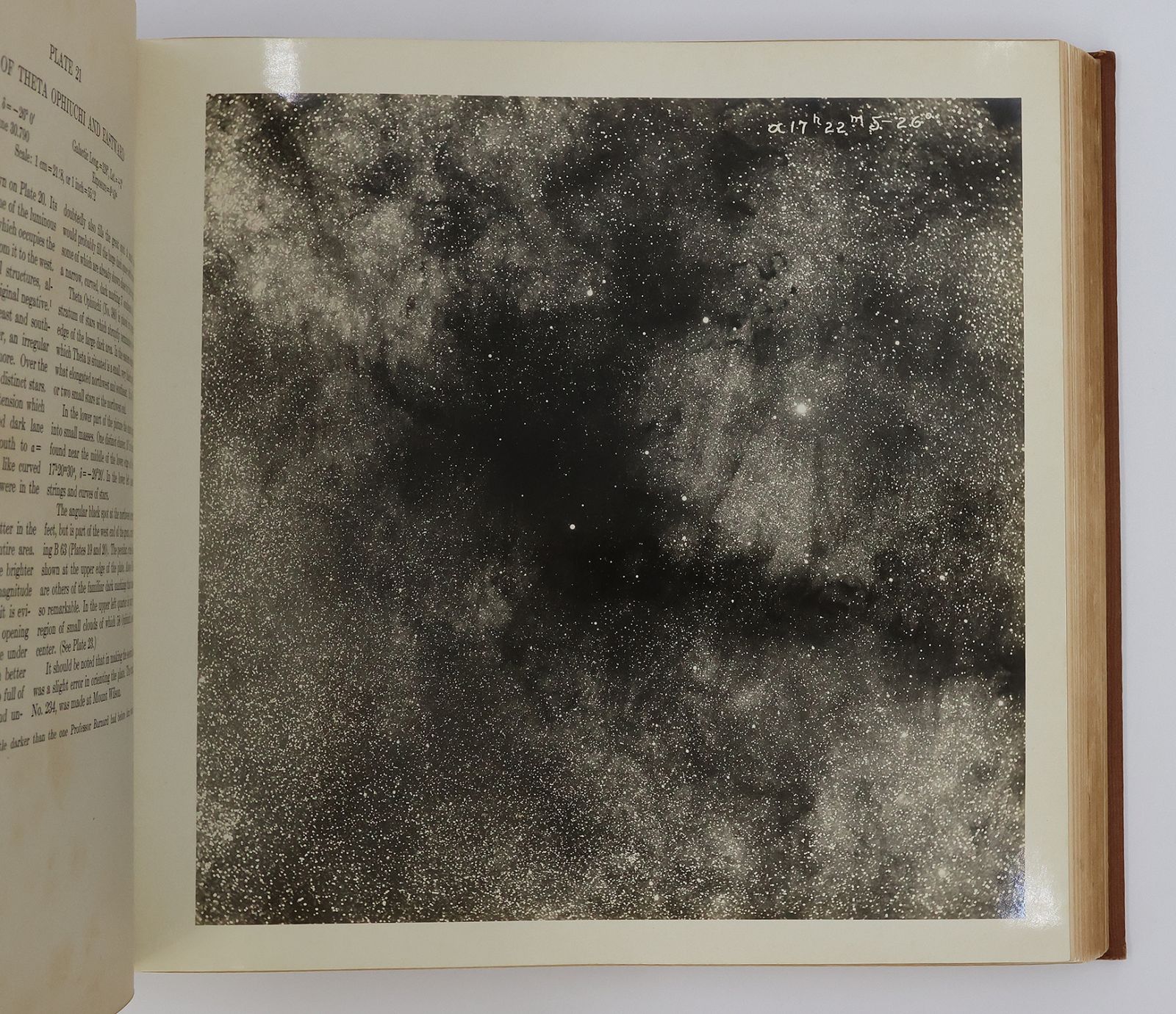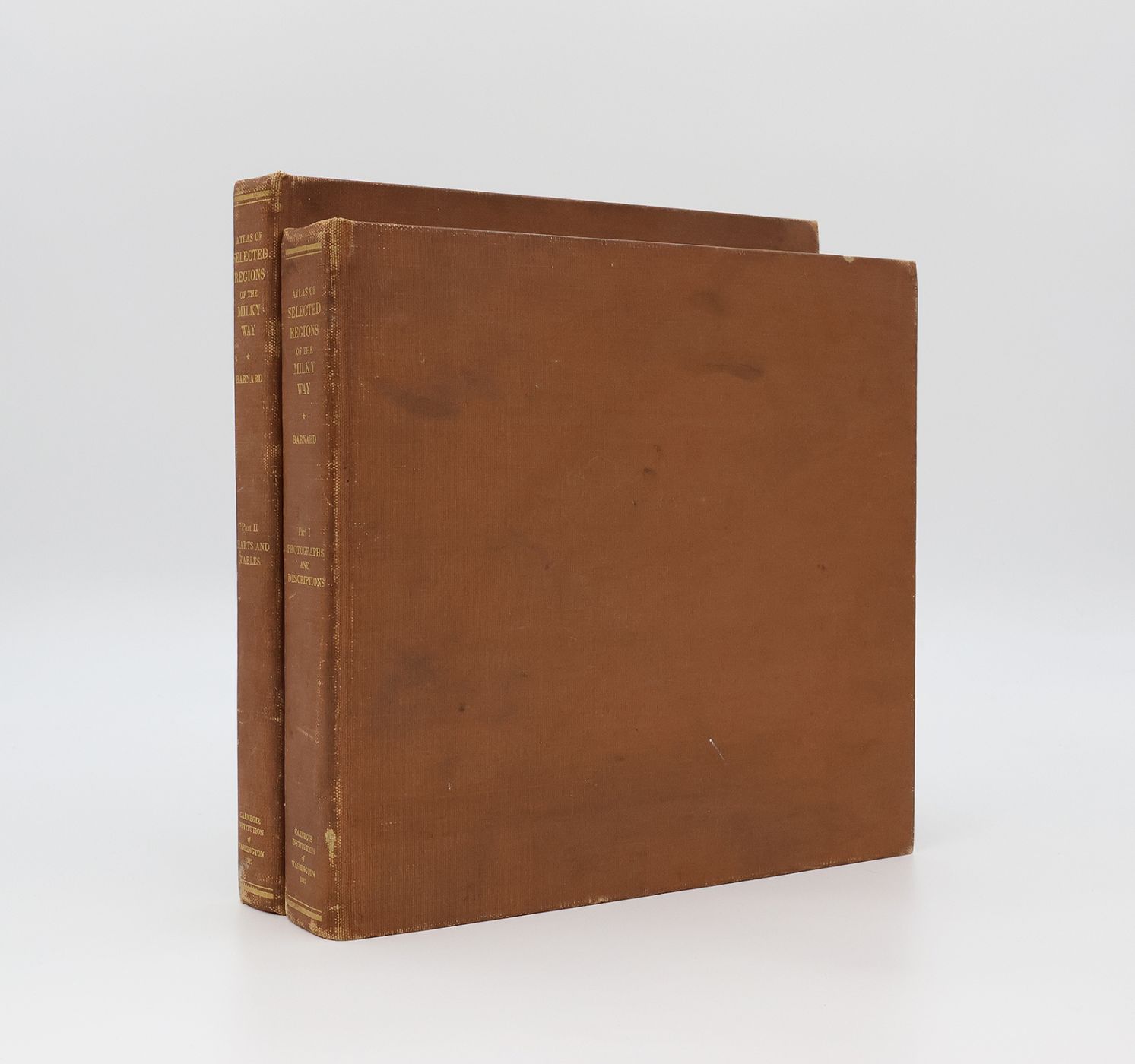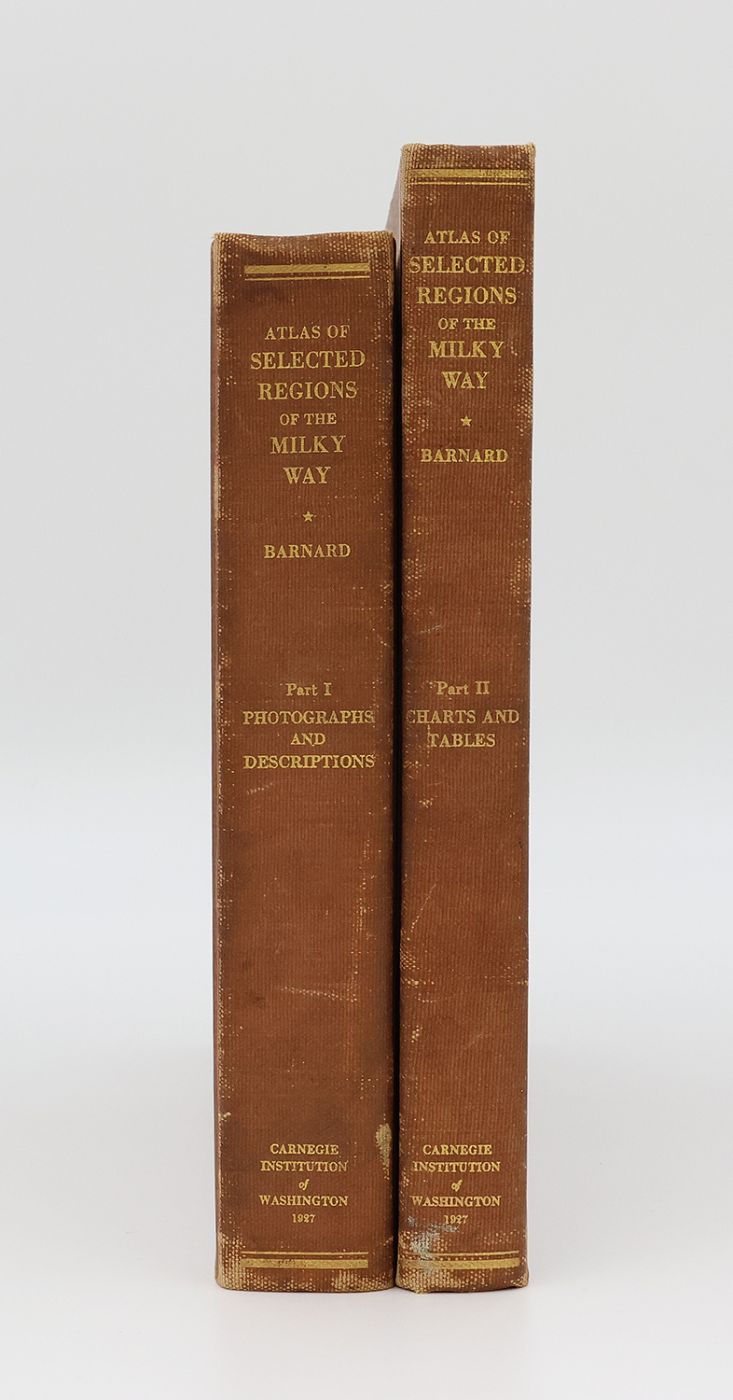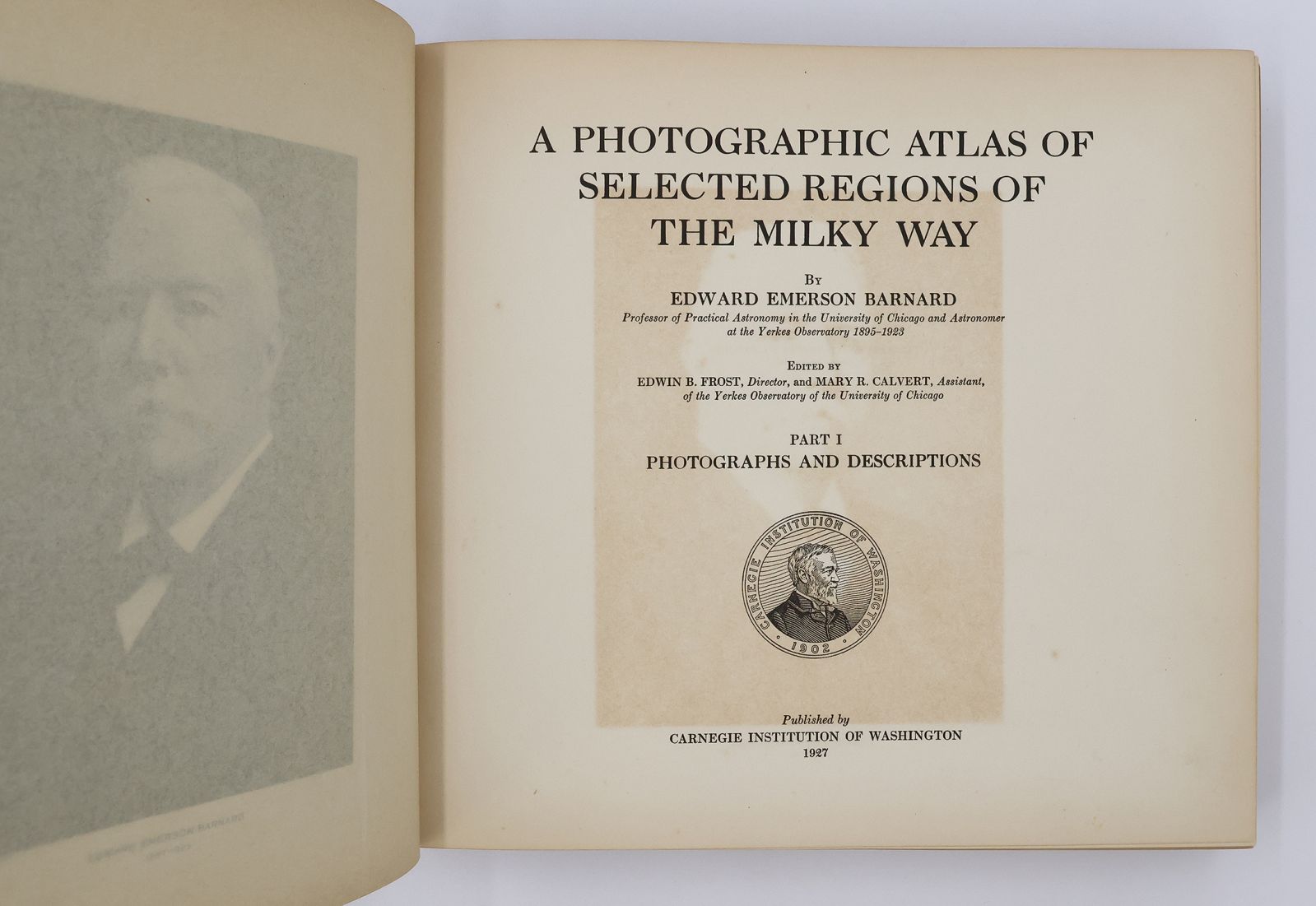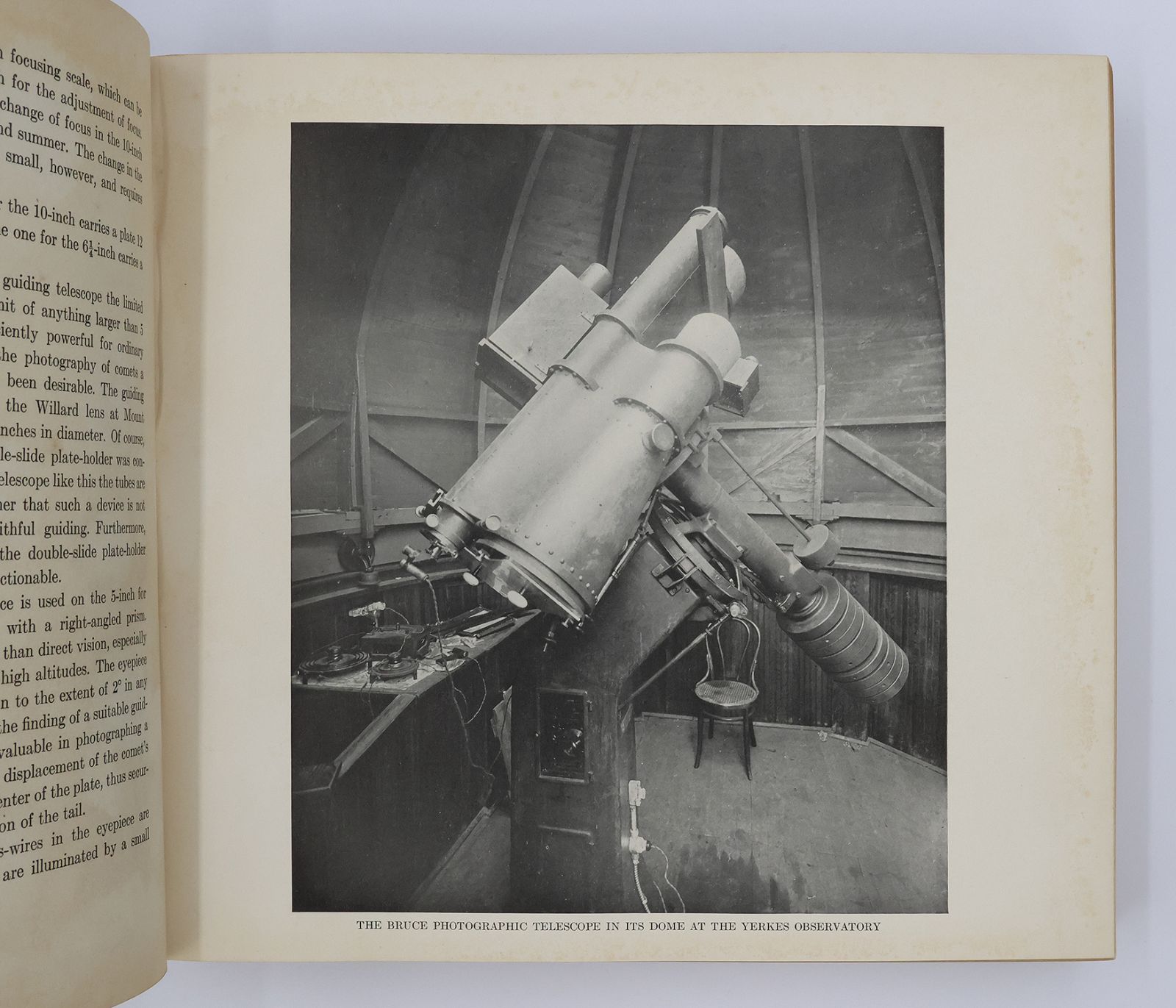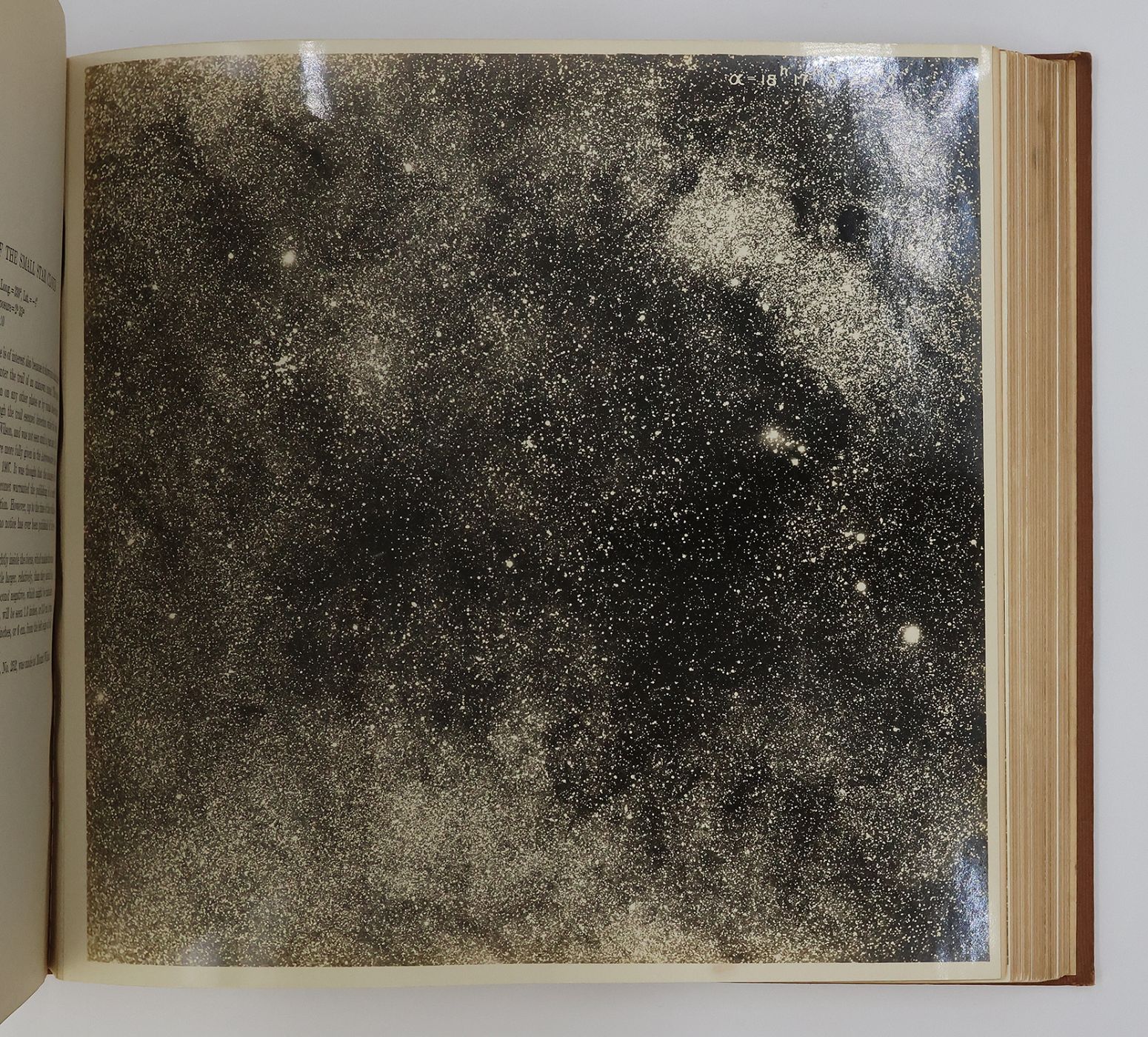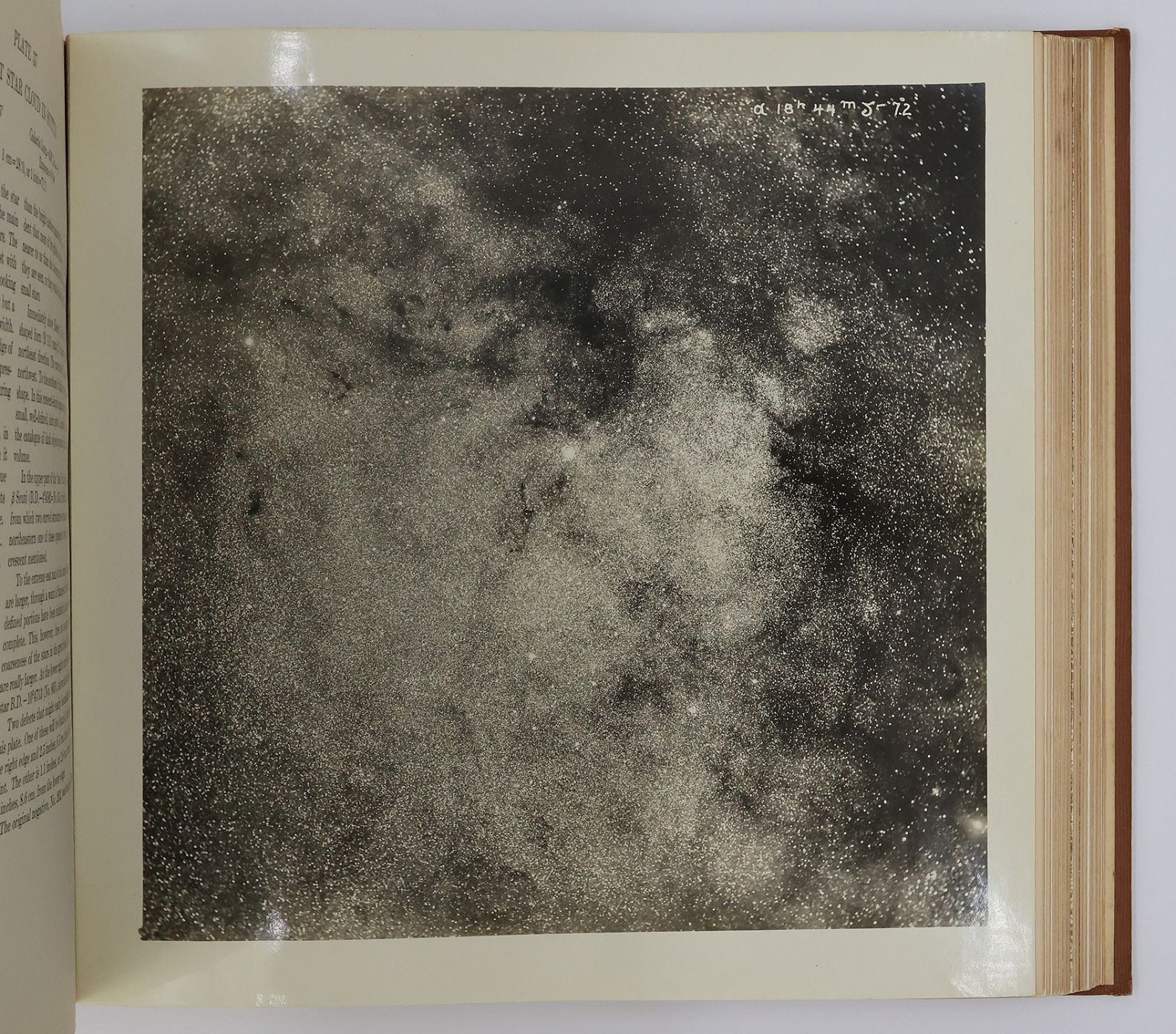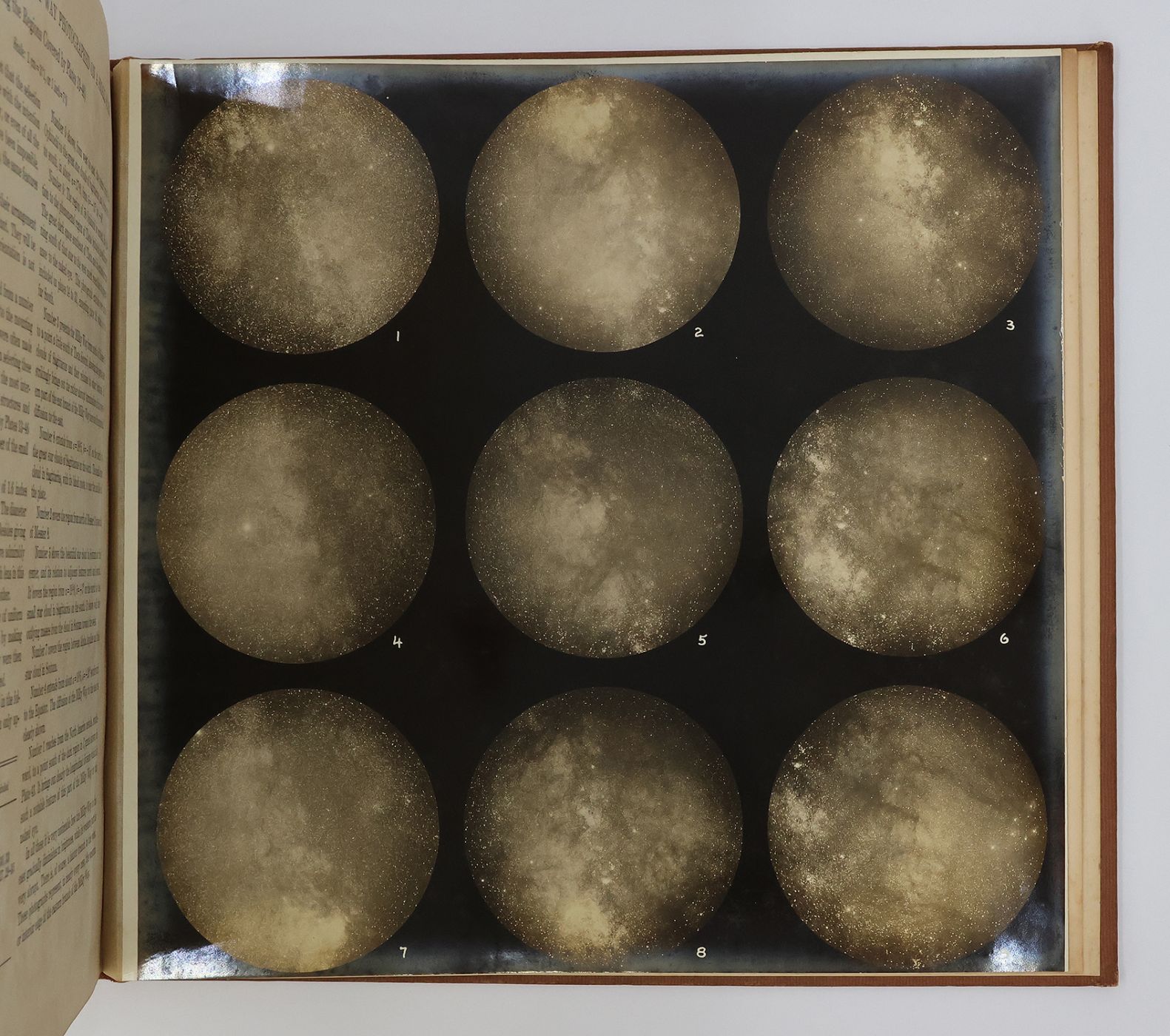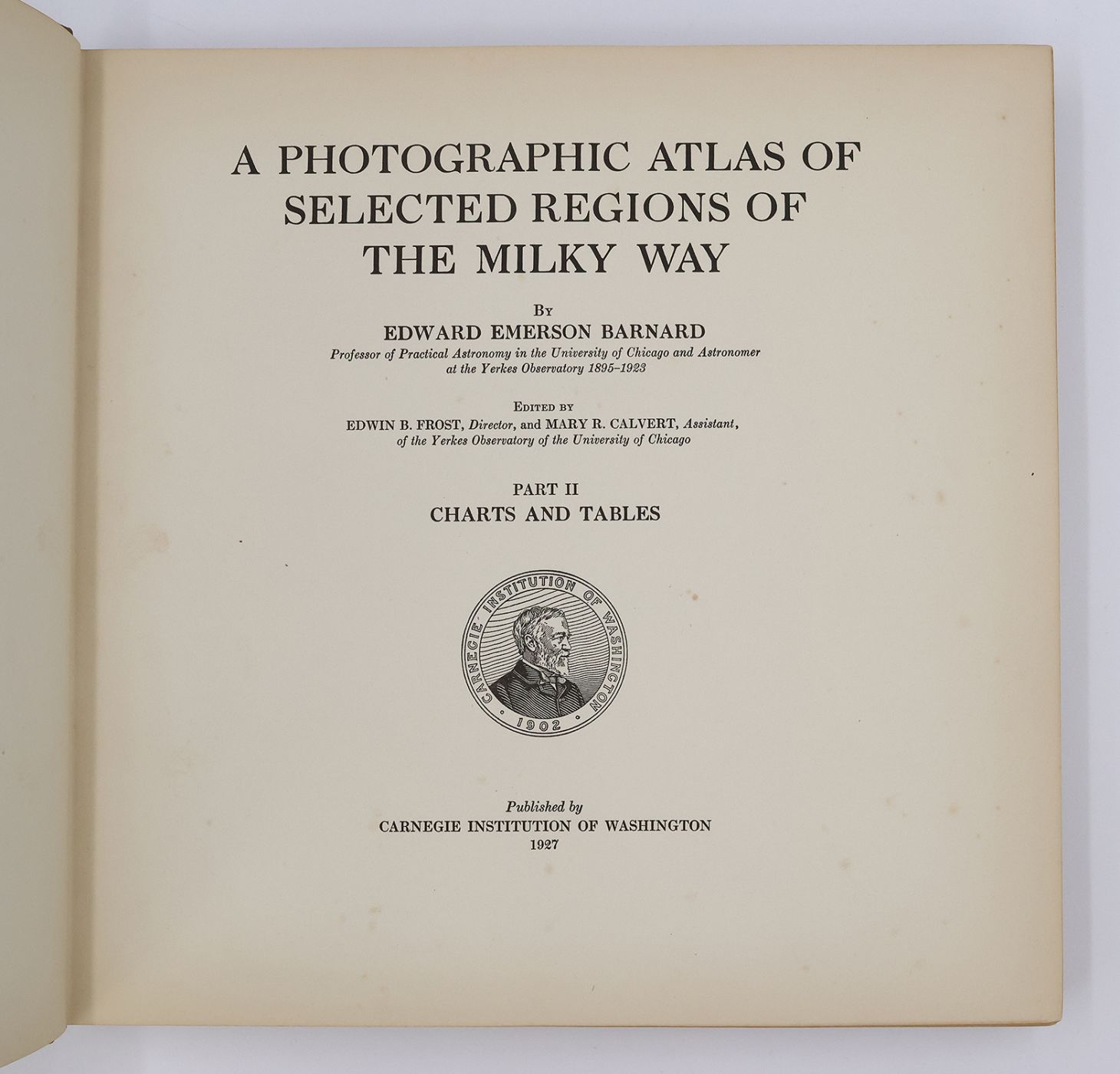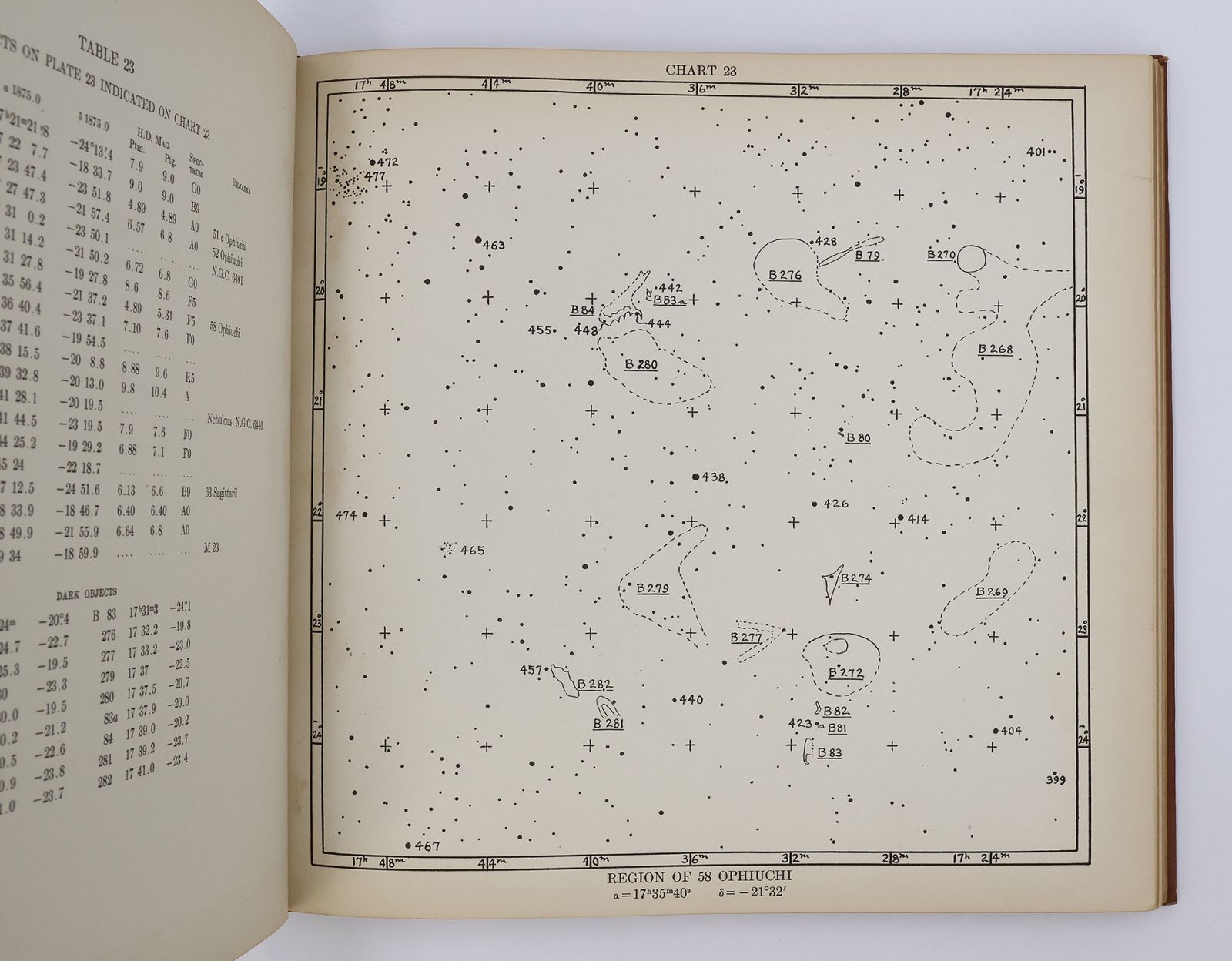A PHOTOGRAPHIC ATLAS OF SELECTED REGIONS OF THE MILKY WAY: Part I: Photographs and Descriptions. Part II: Charts and Tables.
First edition. Two volumes. Oblong quarto (Part I: 275mm x 250mm. Part II: 275mm x 275mm). Publisher's original brown cloth with gilt titles to the spine, without dustwrapper as issued. Illustrated throughout in black and white. Part I with portrait frontispiece, halftone plate of the Bruce photographic telescope and 51 full-page silver photographic prints mounted on linen. Part II with 50 black and white charts and tables. An excellent better than very good copy, the binding square and firm, with light mild bumping to the spine tips, the cloth a little marked and lightly rubbed to the extremities. The contents, with a previous owner's name to the front endpaper of each volume, are intermittently spotted mainly to the first and last pages, with some offsetting of the portrait frontispiece onto the previous page and tissue guard. The facing page of plate 48 has a small tear to the bottom edge with associated creasing, which has also creased the lower border of plate 48 (not affecting the image). The prints have occasional silvering to the extremities, very light surface rubbing and offsetting in places, and are otherwise in near fine condition throughout.
A pioneer of celestial photography and one of the greatest observational astronomers of his time, E. E. Barnard made several important contributions to the field, including the discovery of Jupiter's fifth moon, numerous comets and the star with the greatest known proper motion (named Barnard's Star in his honour). He became interested in astronomy as a child, buying a small telescope with which he discovered comets, nebulae and other celestial objects. As a teenager he worked in a photography gallery in Nashville, learning photographic skills he would later apply to the celestial field. In 1888, the Lick Observatory offered Barnard a position as astronomer, where he began photographing the Milky Way, followed by tenures as Professor of Practical Astronomy at the University of Chicago and astronomer at Yerkes Observatory. In 1897, the university was gifted funding from Miss Catherine W Bruce for the purchase of a telescope and observatory allowing him to continue his work, with the Carnegie Institution providing funding for the production of his seminal Atlas in 1907. Ever meticulous, he personally examined each one of the 35,700 photographic prints produced for the edition, rejecting those not up to his high standards. The images and descriptive text were completed before his death in 1923, the work seen through the press by the director of Yerkes Observatory, Edwin B. Frost, with Barnard's niece and personal assistant Mary Calvert completing the 'Catalogue of Dark Objects' and 'Tables of Objects', which she had worked on under his supervision. A beautiful copy of this scarce and important work, published in an edition of just seven hundred copies.
Stock code: 25154
£5,750
Published:
Category
Modern First EditionsOriginal Artwork
Non-fiction
Maps
Photography
Art Books
Science


